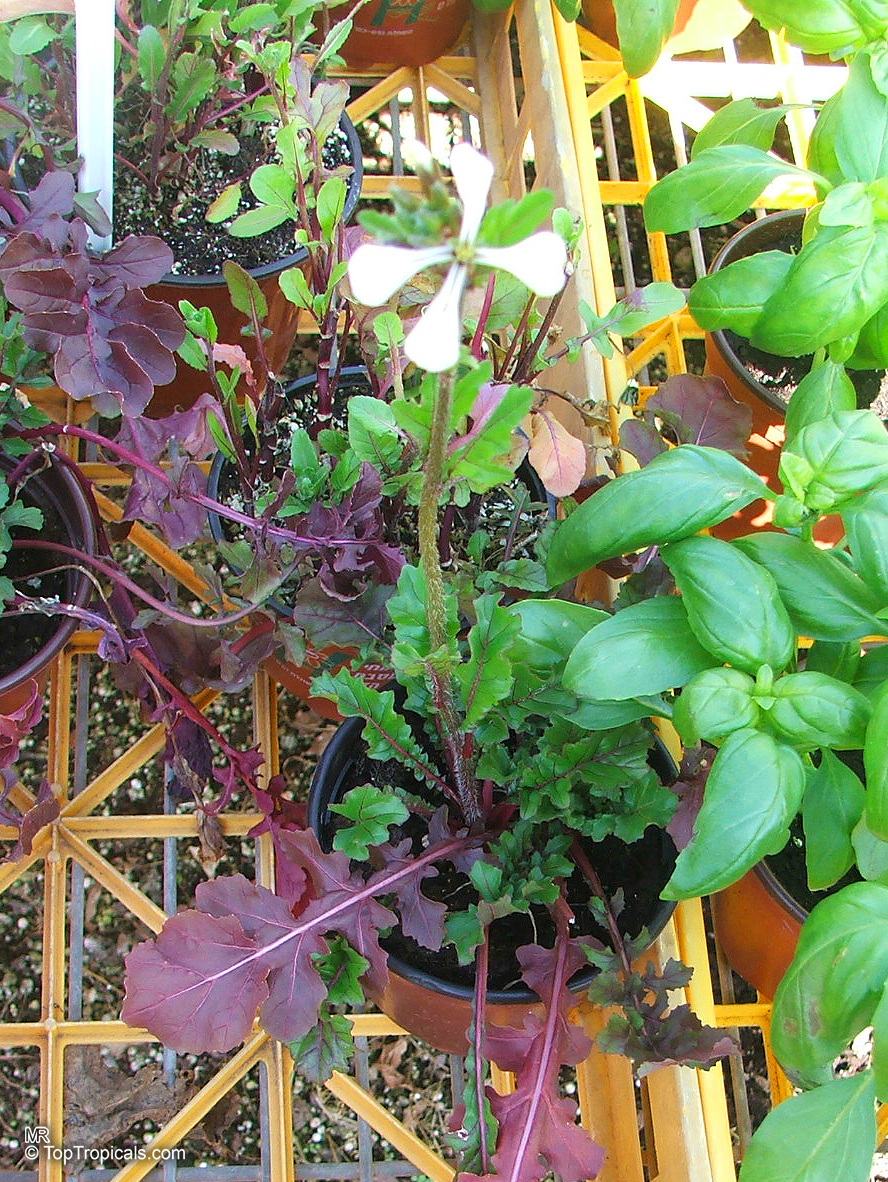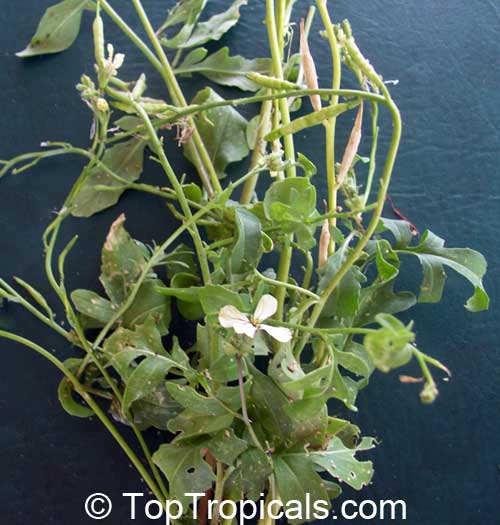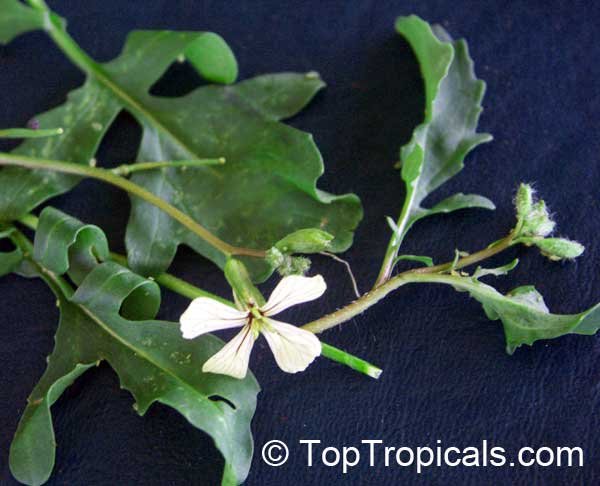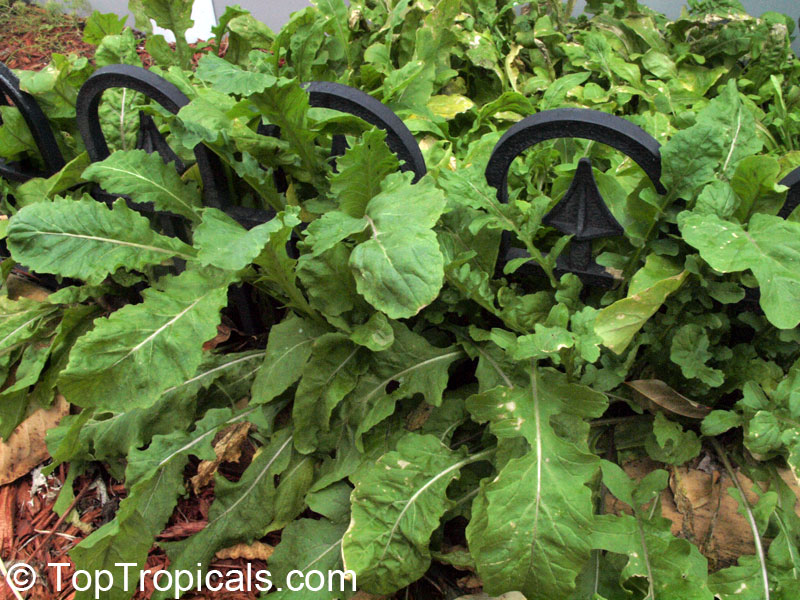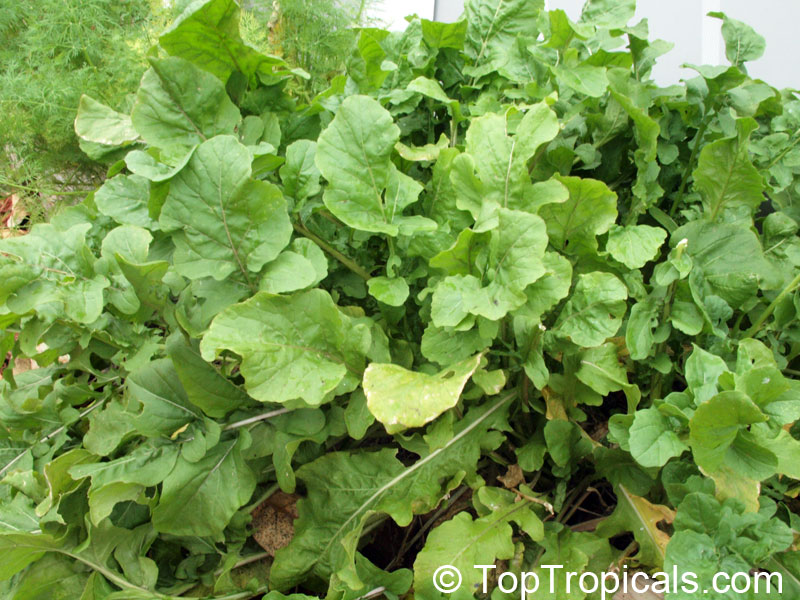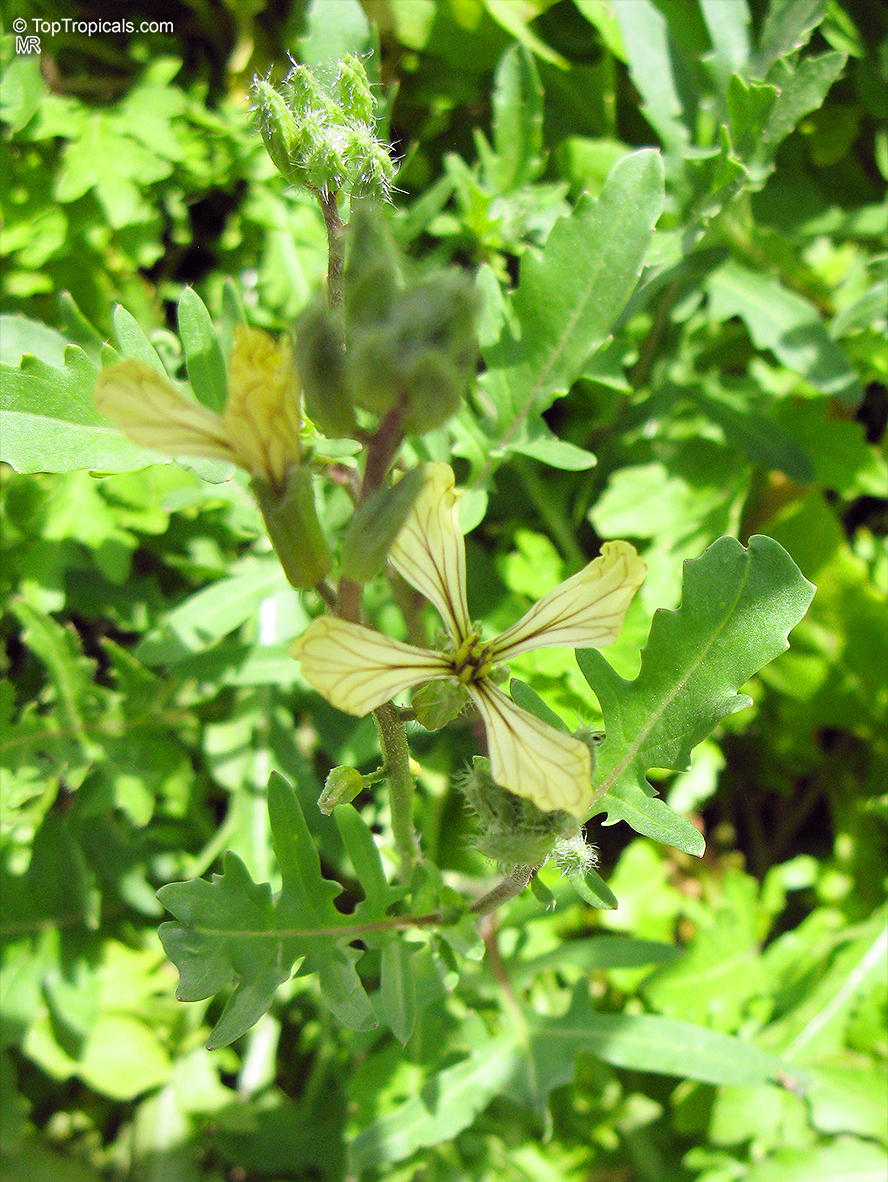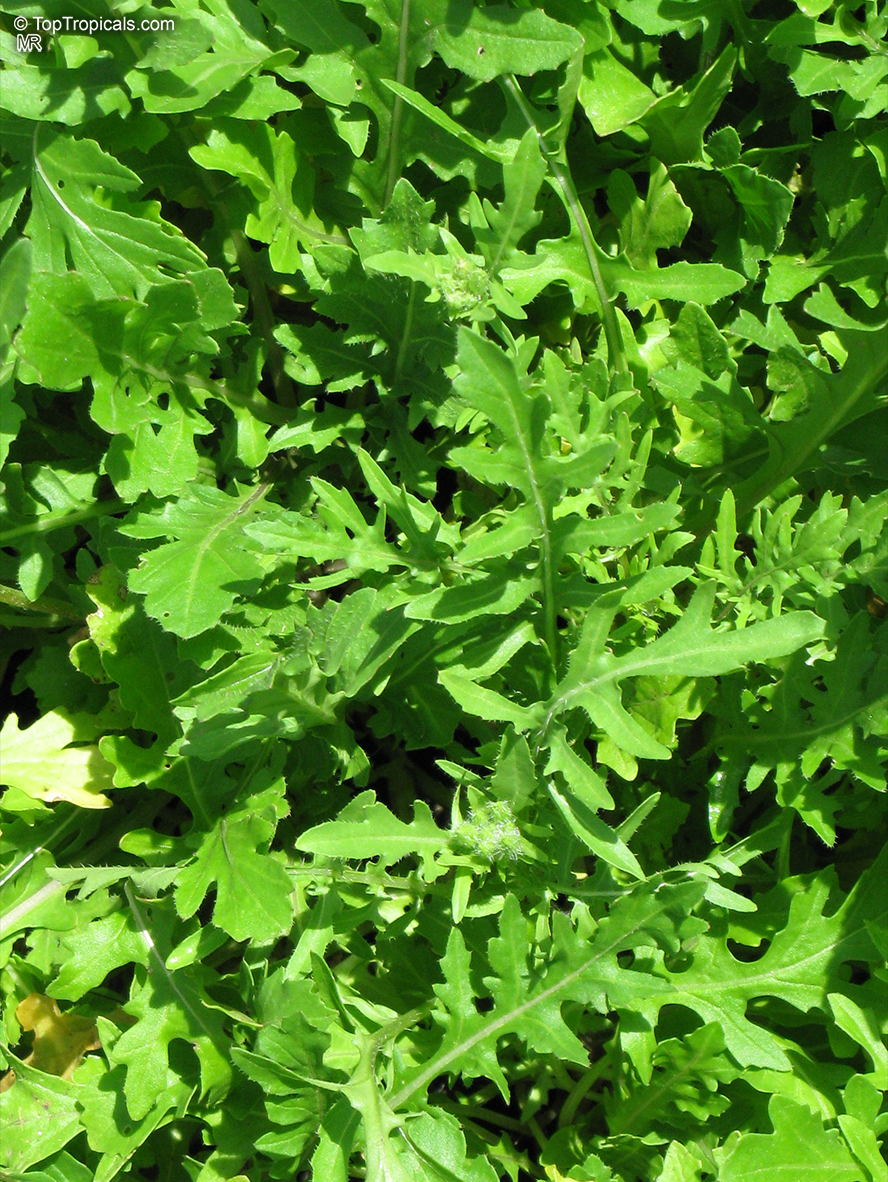Eruca vesicaria subsp. sativa (Arugula)
Top Tropicals Plant Encyclopedia
Botanical name: Eruca vesicaria subsp. sativa
Common names: Arugula, Garden Rocket
Family: Brassicaceae
Origin: Europe, Italy








Eruca vesicaria sativa, also known as Arugula, is a versatile leafy green that is widely cultivated in the Mediterranean area. It is a low-growing, groundcover plant that typically reaches only 2ft in height. This hardy, native European annual is well known for its smooth, glossy, lyrate leaves and pale citron-yellow flowers, which make it a popular and attractive garden plant.
Not only is Arugula visually appealing, it is also packed with nutrients and offers several health benefits. It is rich in vitamin C, potassium, dietary fiber, and antioxidants that aid in digestion and boost immunity. Additionally, studies indicate that it has anti-inflammatory and anti-cancer properties.
Arugula is known for its strong, peppery taste that provides a flavorful kick to any dish. It can be eaten young and tender in salads or mixed into pasta and rice dishes, cooked as a vegetable, or used raw with pasta or meats. One mature plant can produce an abundance of leaves, making it a perfect choice for large families or those looking to harvest their own home-grown greens.
Growing Arugula is easy, and it can be grown in a pot or in the ground in full sun or semi-shade. It requires moderate water and should be planted in USDA Zones 6-9.
In India, the mature seeds of Arugula are known as Gargeer, while on the island of Ischia in the Gulf of Naples, a digestive alcohol called Rucolino is made from the plant. It is considered an aphrodisiac and has been grown since Roman times in the Mediterranean area. Nowadays, it is widely cultivated in various places, especially in Veneto, Italy, and is available throughout the world.
